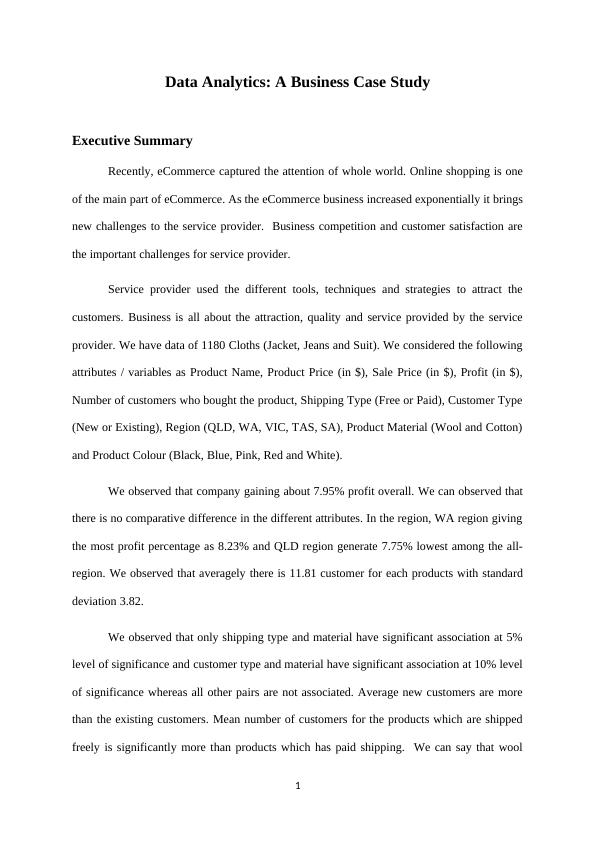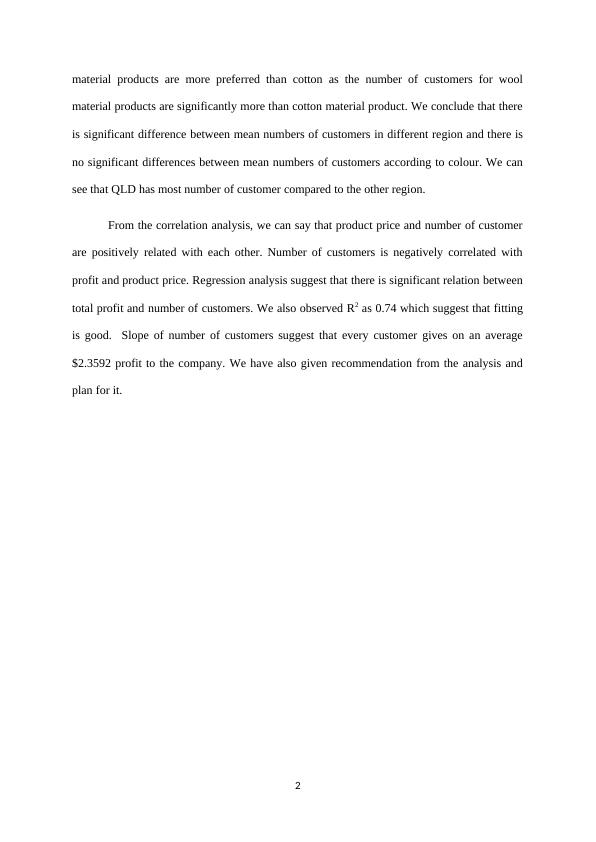Ask a question from expert
A Business Case Study Assignment
19 Pages3900 Words122 Views
Added on 2021-06-18
A Business Case Study Assignment
Added on 2021-06-18
BookmarkShareRelated Documents
End of preview
Want to access all the pages? Upload your documents or become a member.
Data Analytics: A Business Case Study
|16
|3449
|66
A Case Study on Business Assignment
|27
|6003
|29
Data Analytics: A Business Case Study
|15
|3414
|326
Data Analytics: A Business Case Study
|15
|3529
|269
Data Analysis Report for Book Sales
|13
|2550
|473
Costs of Operating the Business
|5
|611
|202



